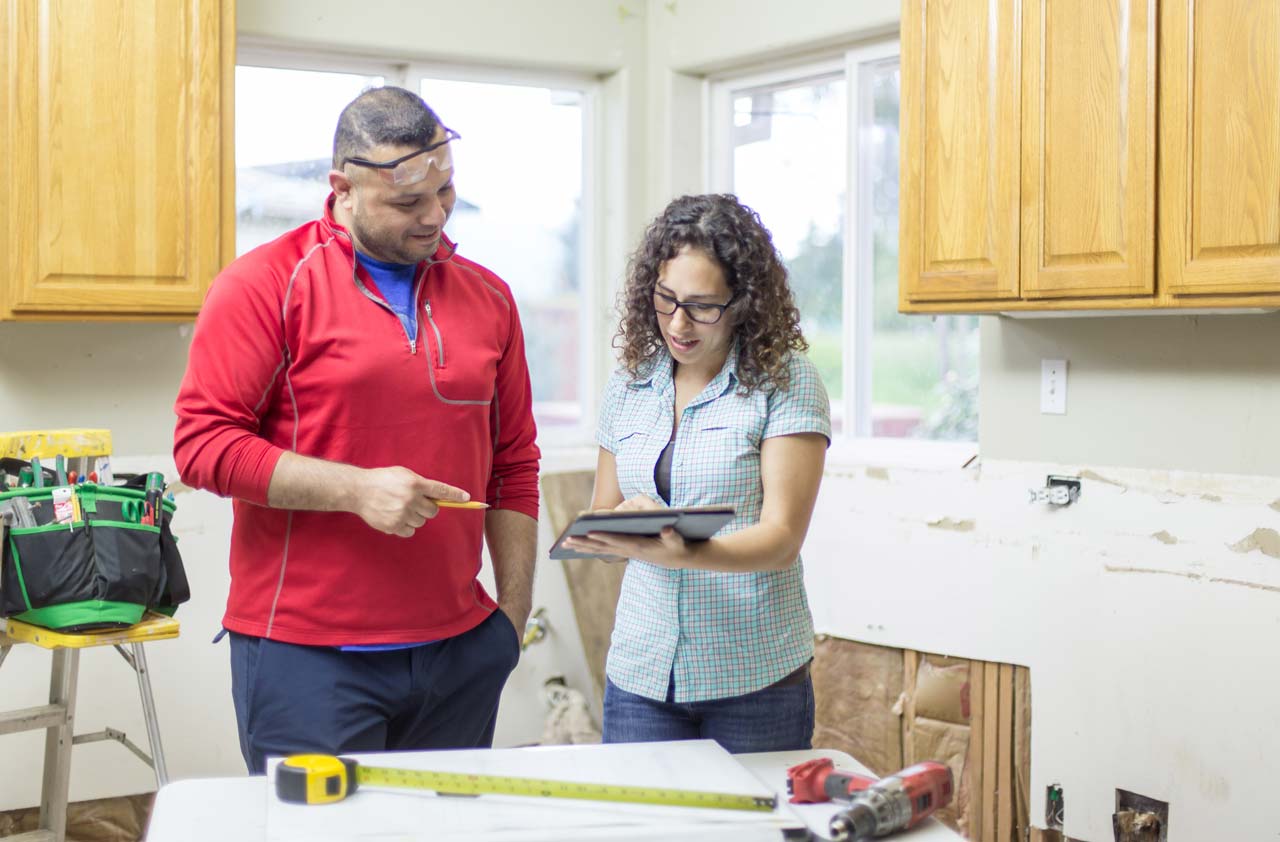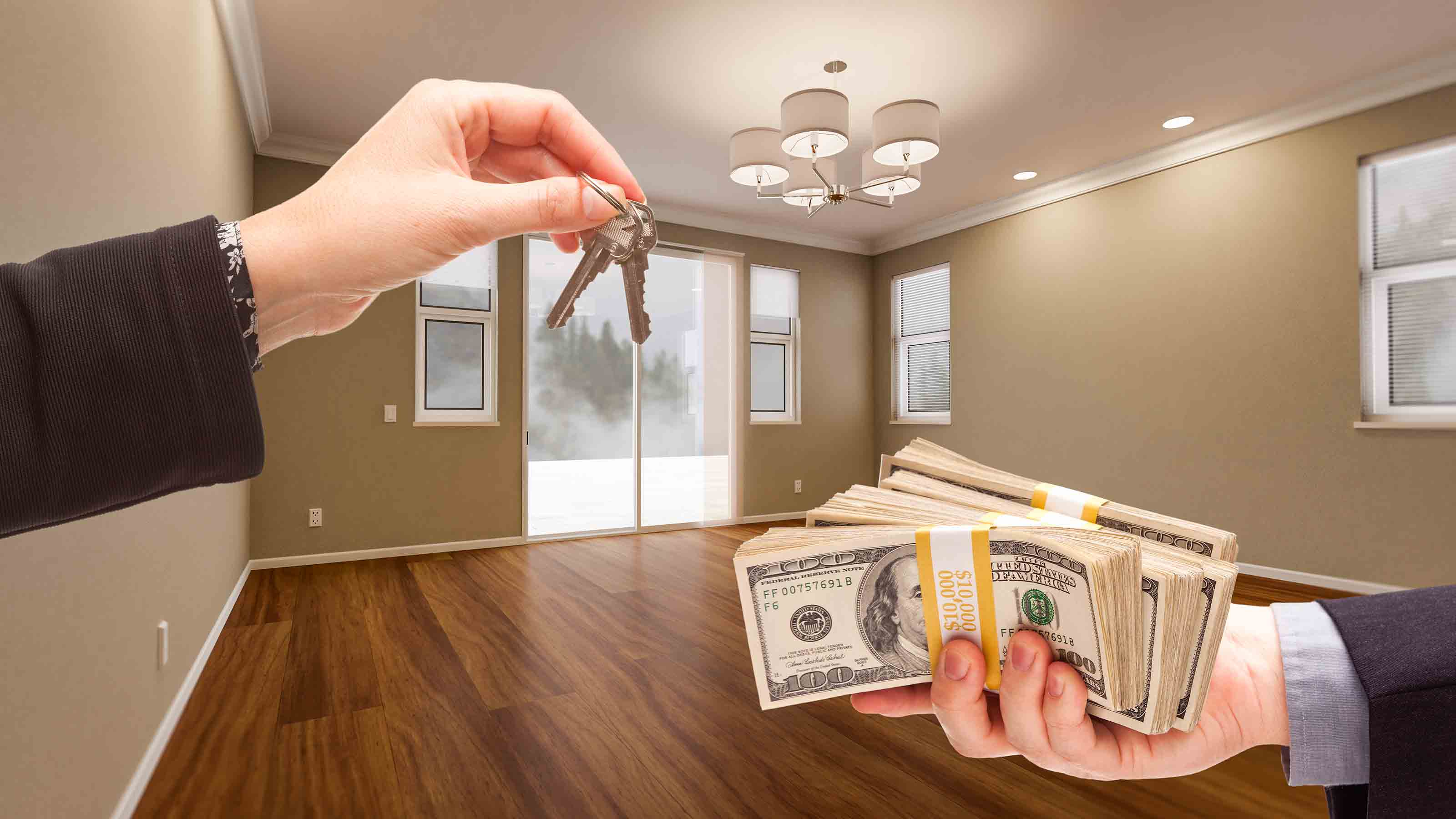Home Projects That Will Sell Your Home Faster and for a Higher Price in 2017
"As is" usually isn't good enough.


In a perfect world, you would have a picture-perfect house ready to put on the market at a moment's notice. You would quickly receive multiple offers for more than your asking price, maybe even with no repair contingencies.
But even if your home doesn’t need repairs, if you’ve lived there a while and haven’t remodeled lately, it’s a good bet that the kitchen, bathrooms or basement rec room could use updating. Your goal is to decide how much you’re willing to spend on your home before you set a price and list it for sale. That means weighing supply and demand in your market, scoping out your competition, and strategically picking upgrades that will help sell the house and recover your costs.
Project Versus Price
Even if you aren’t planning to sell immediately, it’s smart to invite a real estate agent to evaluate your home. Ask for a to-do list to make your house competitive in your neighborhood, keeping in mind that the higher the price, the pickier the buyers will be. Even if you’re not ready to list your home, an agent who wants your future business will gladly help.

Sign up for Kiplinger’s Free E-Newsletters
Profit and prosper with the best of expert advice on investing, taxes, retirement, personal finance and more - straight to your e-mail.
Profit and prosper with the best of expert advice - straight to your e-mail.
Agents competing for your listing will give you a comparative market analysis (CMA), which includes listing information for properties for sale (or those that recently sold) that are similar to yours in size and number of bedrooms and bathrooms. The CMA has data on price history, time on the market and how properties differ from your home in condition and features.
The agent will recommend the improvements that he or she thinks will provide the most bang for your buck—the quickest sale or the highest asking price. It’s a good idea to verify the agent’s advice by attending open houses of comparable homes in your market.
For the national average cost and percentage return for 30 home-improvement projects, check out Remodeling magazine’s annual Cost vs. Value Report.
Before you consider pricier projects, at a minimum plan to declutter, depersonalize, clean and paint. Neutralize the decor of your home, eliminating a passé color scheme or anything that could turn off potential buyers, such as orange shag carpeting, a purple accent wall, faux-painting effects or custom murals. Many agents will provide or refer you to a stager, who will remove and arrange furniture to make rooms look bigger and improve traffic flow, or add furniture and decorative accents in a vacant house.
If something, say the roof, is in serious disrepair (and your home isn’t a rehab or teardown), fix it if you can, even if you don’t expect to get your money back. You’ll avoid scaring away buyers or having the issue show up in the buyers’ inspection—when, depending on how much leverage they feel they have, they will probably ask you to repair it anyway.
If you anticipate that a major home system, such as a furnace, is reaching the end of its useful life, pay to have it inspected and serviced, says Denver agent Anthony Rael. Leave the contractor’s report and bill on the kitchen counter for buyers to see. Rael also suggests that you consider buying a home warranty, which covers major appliances, wiring, and heating, cooling and plumbing systems. For about $400 to $600, it will protect you during the listing period if, say, an older appliance needs to be replaced, and it will reassure buyers that they will be protected for at least a year after they purchase the home. Real estate agents typically sell you the warranty or refer you to independent providers. (Check the warranty company’s Better Business Bureau rating.) You can transfer the warranty to the buyer at closing for a nominal fee.
“As Is” Usually Isn’t Good Enough
With inventory low in many cities, sellers in theory should be able to sell their homes as-is and still get a great price. But your leverage as a seller varies by zip code and price tier. Entry-level homes are in shortest supply, and in general, buyers must take what they can get; that gives sellers the advantage on condition and price. For example, in Denver, where the housing market has been superheated for several years, homes priced under $375,000 sell as-is quickly and for a strong price, says Rael. But the supply of higher-priced homes is more plentiful, he says, and buyers are pickier.
By contrast, Sarasota, Fla., agent Deb O’Mara says many homeowners who bought there during the real estate bust have begun to cash out, even as new construction is being completed. Paying for projects such as refinishing your floors doesn’t mean you can set a higher price, but it does mean you will sell more quickly.
Rather than trying to negotiate what work should be done with a soon-to-be-ex spouse or settling an estate with anxious family members, an as-is sale may be the best way to get the house on the market quickly, says Rebecca Agosta, an agent in New York’s Hudson Valley. Note that buyers tend to overestimate the cost of repairs and will usually subtract it from your list price. A good way to counter that is to get quotes for the work and give them to buyers.
Get Kiplinger Today newsletter — free
Profit and prosper with the best of Kiplinger's advice on investing, taxes, retirement, personal finance and much more. Delivered daily. Enter your email in the box and click Sign Me Up.

-
 Stock Market Today: Great Power Affairs Mesmerize Markets
Stock Market Today: Great Power Affairs Mesmerize MarketsThe U.S. and China are at least talking about talking about tariffs, and investors, traders and speculators are showing a little less fear.
By David Dittman
-
 Is Walmart Plus Worth It?
Is Walmart Plus Worth It?There are tons of exciting Walmart Plus benefits – but are they worth the $98 annual fee?
By Rachael Green
-
 How to Search For Foreclosures Near You: Best Websites for Listings
How to Search For Foreclosures Near You: Best Websites for ListingsMaking Your Money Last Searching for a foreclosed home? These top-rated foreclosure websites — including free, paid and government options — can help you find listings near you.
By Bob Niedt
-
 Luxury Home Prices Rise as the Rich Dodge High Mortgage Rates
Luxury Home Prices Rise as the Rich Dodge High Mortgage RatesLuxury home prices rose 9% to the highest third-quarter level on record, Redfin reports, growing nearly three times faster than non-luxury prices.
By Kathryn Pomroy
-
 Four Tips for Renting Out Your Home on Airbnb
Four Tips for Renting Out Your Home on Airbnbreal estate Here's what you should know before listing your home on Airbnb.
By Miriam Cross
-
 Five Ways to Shop for a Low Mortgage Rate
Five Ways to Shop for a Low Mortgage RateBecoming a Homeowner Mortgage rates are high this year, but you can still find an affordable loan with these tips.
By Daniel Bortz
-
 Looking to Relocate? Plan for Climate Change
Looking to Relocate? Plan for Climate Changebuying a home Extreme weather events are on the rise. If you’re moving, make sure your new home is protected from climate change disasters.
By Rivan V. Stinson
-
 Retirees, A Healthy Condo Has a Flush Reserve Fund
Retirees, A Healthy Condo Has a Flush Reserve FundSmart Buying Reserve funds for a third of homeowner and condo associations have insufficient cash, experts say. Here are some cautionary steps you should take.
By Patricia Mertz Esswein
-
 Cash Home Buyers: New Services Offer Help Making All-Cash Offers
Cash Home Buyers: New Services Offer Help Making All-Cash OffersBecoming a Homeowner Some firms help home buyers make all-cash offers on homes. Weigh the fees before you sign on.
By Emma Patch
-
 Home Sale Prices in the 50 Largest Metro Areas
Home Sale Prices in the 50 Largest Metro AreasBecoming a Homeowner What’s happening in the market where you live?
By the editors of Kiplinger's Personal Finance